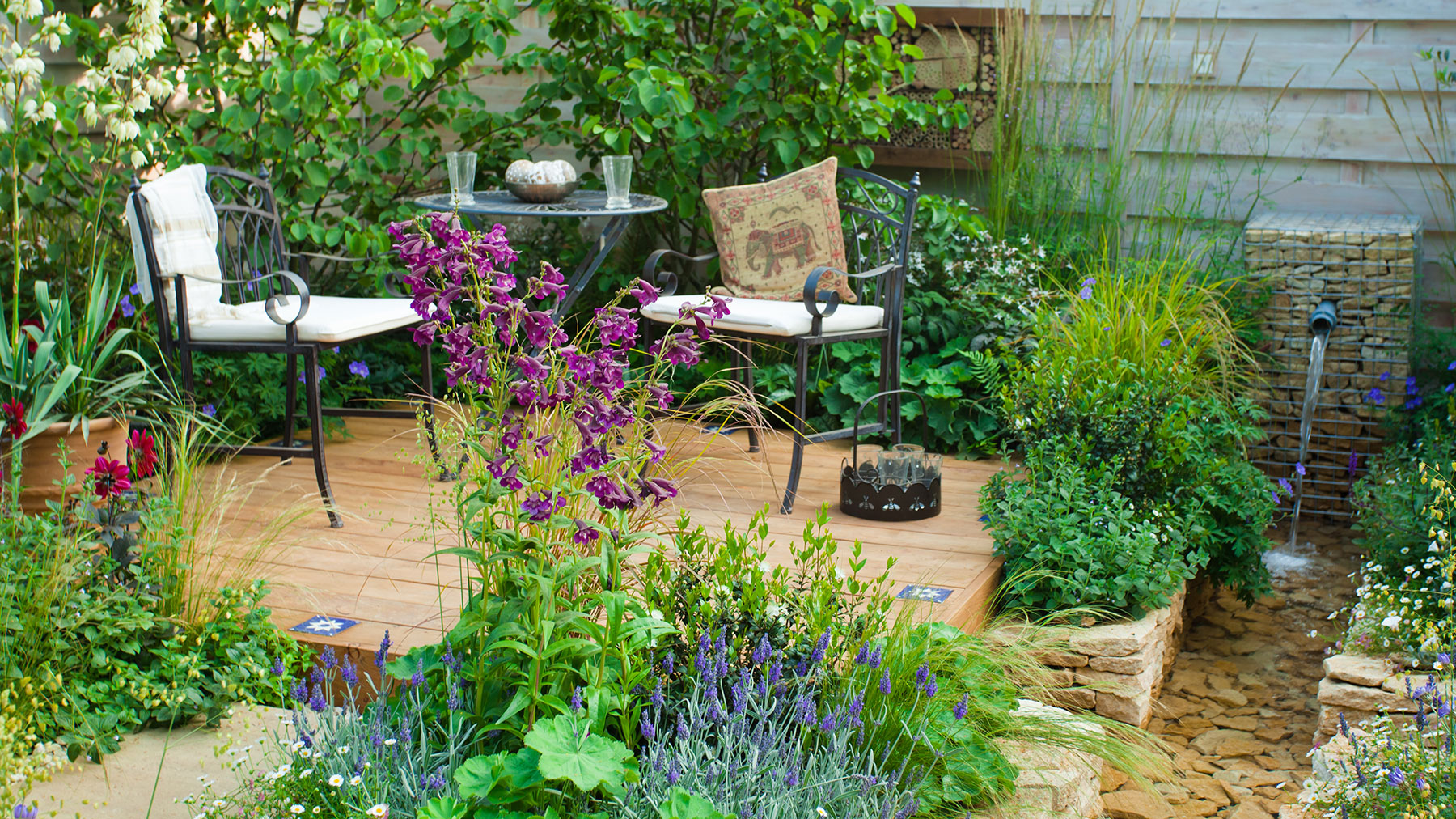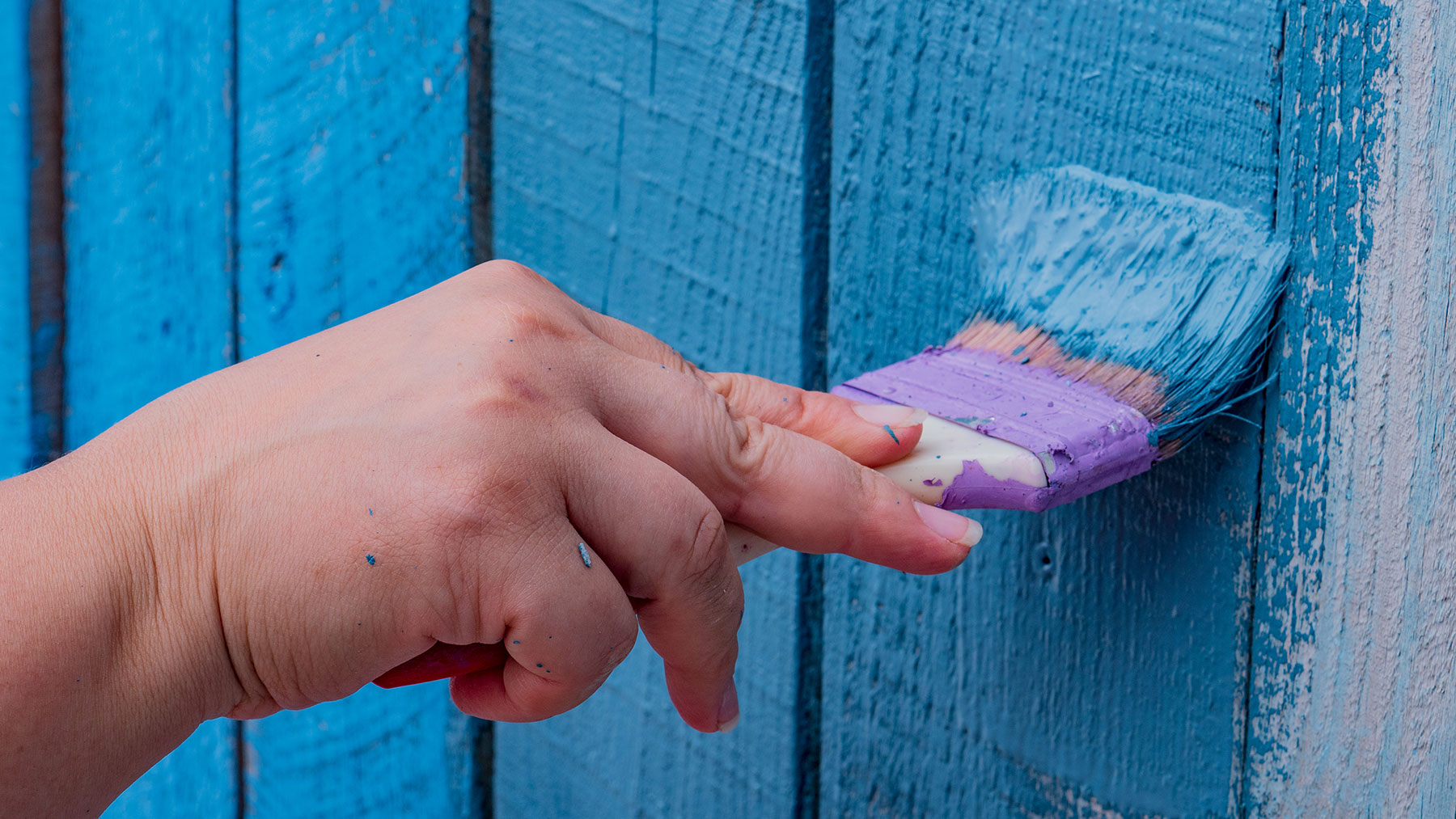7 cheap ways to upgrade your yard for the summer
Low cost tips to transform your yard

As the weather becomes warmer and we spend more time in our yards, it can be easy to become disheartened with how much work needs to be done to transform it into a delightful outdoor space to enjoy.
While it’s generally perceived to be expensive to transform a yard, this isn’t necessarily the case. With a bit of careful thought and creativity, you can make your space look fantastic using materials you already have. Plus, with a few inexpensive purchases and a bit of effort, you can have an area you’re proud of no matter its size.
Here, Joshua Houston, garden expert at Household Quotes reveals 7 ways to transform your yard on a budget. You might also be interested in reading, Going on vacation? Experts share 9 tips for keeping your garden thriving while you’re away.
1. Get out a paint brush

One way of transforming your yard is to think about your boundaries, and smarten up your fences with a new lick of paint. The same applies to any trellis work or wooden garden furniture.
“Over the course of the last year, the paint on your garden fence and furniture has likely faded or begun to fade,” says Houston, “So get your paintbrush out and begin giving your garden some fresh coats.”
But before you head down to your local hardware store check what you already have. “Look in your garage, shed or storage cupboards for any leftover paint, this will save you a lot of money and waste.”
If you find you haven’t got any leftover paint, Houston says, “Another tactic is asking on local community social media pages, there’s bound to be people who have spare paint that they don’t intend to use.”
Sign up to get the BEST of Tom's Guide direct to your inbox.
Get instant access to breaking news, the hottest reviews, great deals and helpful tips.
2. Create zones

If you have a large yard, it can provide several uses, including space to relax, gardening and even exercise. However, having a large yard can make it difficult to maintain. To overcome this problem, Houston suggests dividing it into zones to ensure its full potential is utilized.
“You could have an area with seating to relax, a section for plants and growing produce, and then an area left for physical activity,” he says.
Houston adds that dividing the yard into zones gives everyone in the household a reason to use the outside space, meaning “the more people taking care of it reduces the amount of work one person has to do.”
I have a long, narrow yard and have divided it into zones myself. I've used railway sleepers as steps to separate a gravel patio area next to my house with a raised lawn. The middle section is divided by a patio that runs halfway across the garden, which leads to another seating area with a bench backed by a trellis panel. Apart from acting as a divider, the trellis hides a multitude of sins at the far end of my yard. I refer to it as the ‘business end’ of the yard. It’s where I grow veg, have my shed and hang out my washing to dry.
3. Power wash your patio or deck

Although we invest time in creating the ultimate lawn, sometimes the simple things, such as paving, are forgotten. “It’s normally the first thing you will see when you exit the back of your home, so give your paving a good clean,” says Houston.
You can clean your patio without a power washer, as sometimes a quick sweep and tidy-up will do. However, if your paving needs a little more care, Houston suggests using a jet washer, as its “immense power will leave a nice tidy finish.”
But before you rush out to buy a pressure washer, Houston suggests being inventive. “These can be rented if you don’t already own one, but they are quite common, so it might be worth asking friends and family if they have one that you can borrow.”
4. Create a garden path

Adding a path will add extra interest to your yard and can even create a sense of mystery, enticing you further into the space. Houston says a path can also give you a place to walk without damaging plants.
Before spending out on pricey paving slabs, Houston advises taking time to look at all the options. “Spend time researching materials and searching social media to see if anyone has anything to use for free. Gravel is a good option and much cheaper than paving slabs. “It’s important to think outside the box, so don’t rule out items in your home that can be reused as a garden path,” he suggests.
Top tip
One option when creating a garden path is to use a mix of gravel and pathing slabs. Rather than laying a blanket of slabs, gravel can be used between the slabs to create added texture and interest while helping to keep down the cost. You could also use bark chippings as an alternative to gravel.
5. Add solar powered lights

While lighting can be used inside the home to create various moods and serve different purposes, it can also be used in the yard. Although, when we’re all conscious of saving energy, it can seem extravagant to fit out a full light display outside.
“Some of the best time spent in a garden will be late at night, with your lights shining, providing a nice twinkle,” says Houston. However, these lights can often be high maintenance, with installing a lighting system throughout your garden being expensive.
“Battery lights might seem like a good alternative, but this will cost you a lot of time and money having to keep replacing the batteries.”
This is where solar-powered lights come in, “They use the sun’s energy during the day to allow them to light up at night. This means after your initial purchase, you don’t have to worry about paying for anything else,” adds Houston.
I’ve placed a string of solar lights around a small arbour seat, and it’s pretty to see the lights on at night, whether I’m sitting outside or viewing it from inside. You can also place them along garden paths or in flower beds to bring gentle light to highlight your plants.
Toodour Solor String Outdoor Lights: $26 @ Amazon
These 56 feet, 100 LED globe string lights come with eight modes and are suitable to use as patio lights, around a gazebo or across fencing. The warm white lights will cast a soft glow in your yard during the evening.
6. Use recycled materials

Before you chuck anything out, think about how it could be used in the yard. Houston says, “Recycled materials can be an excellent addition to your garden. Old tyres, for example, can be filled with dirt and used as one big plant pot. You can also use similar items to create swings and other outdoor fun for your children.
Houston also suggests turning aluminium food cans into plant pots and decorating them with paint in any color or style you like.
Another great option is to recycle your food waste, which Houston says makes great compost. So before you bin coffee grinds, egg shells, fruits, vegetables and bread, save them to create compost to nourish your plants.
Think outside the box
I’ve even used a lid for a compost bin as a bird bath. I turned it upside down, added some pebbles and balanced it on a few old house bricks. It wasn’t the prettiest thing, but the birds loved it.
7. Let your grass grow

You don’t necessarily have to buy plants to attract butterflies and other pollinators to your yard to encourage wildlife. Letting your grass grow will encourage beneficial wildlife.
It’s a popular trend that I’ve taken part in, encouraged by movements such as No Mow May. Houston says the growing trend has “proven as better for local wildlife, in particular bees, which are crucial for pollinating plants.”
If you’re worried that your lawn will become untidy, Houston suggests, “You don’t have to let all of your grass grow, just a section, as it will make your garden look unique compared to others. It is also quite low maintenance — not everyone has the time or wants to constantly mow the grass.”
More from Tom's Guide

Camilla Sharman has worked in publishing and marketing for over 30 years and has covered a wide range of sectors within the business and consumer industries both as a feature, content, and freelance writer.
As a business journalist, Camilla has researched articles for many different sectors from the jewellery industry to finance and tech, charities, and the arts. Whatever she’s covered, she enjoys delving deep and learning the ins and out of different topics, then conveying her research within engaging content that informs the reader. In her spare time, when she’s not in her kitchen experimenting with a new recipe, you’ll find her keeping fit at the gym. In the pool, stretching at a yoga class, or on a spin bike, exercise is her escape time. She also loves the great outdoors and if she’s not pottering about in her garden, she’ll be jumping on her bike for a gentle cycle ride.

